
Film Review | Doctor Strange
Producers: Marvel Studios, distributed by Walt Disney Studios
Runtime: 115 minutes
MPAA Rating: PG-13
EE Critic Score: 7/10
Doctor Strange is the fourteenth movie set in the Marvel Cinematic Universe. It is another origin story, this time telling the tale of Dr. Steven Strange, a famous surgeon who loses the steady use of his hands, starting him on a path toward becoming Earth’s guardian against dangers from other universes.
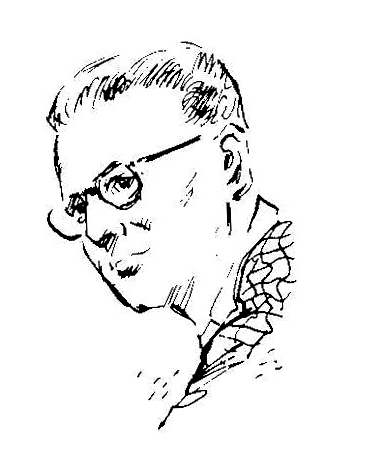
This movie is Marvel’s second attempt to integrate one of their fantasy characters into the MCU, which, I remind you, officially doesn’t have magic. In the first such attempt, Thor, it was established that Marvel would be leaning heavily on Clarke’s Third Law.
Any sufficiently advanced technology is indistinguishable from magic. — Arthur C. Clarke
If you doubt Clarke’s assertion imagine this scenario:
(You are transported back in time to the iron age, with an LED flashlight in your possession.)
The people you encounter: (view your flashlight, which produces light without heat) This is a magical item!
You: No it isn’t, really. It’s electronic. There are batteries in it which sends electricity through the wires to the diode, which then glows.
Them: So, the batteries are magic?
You: No, they work by…chemicals, or something
(You realize that, truth be told, you don’t really know quite how batteries work. You remember something about electrolytic processes inducing a current which travels out the positive end. Or is it the negative end? It must be the negative end, because electrons are negative, and they should be pooling at that end waiting for their turn to take a trip to the diode.
Oh, goodness, the diode! You really have no idea how that works at all. You glance at it. It’s a small, somewhat green thing. No obvious signs of what glowed, or why.)
You: Uh, I’m actually not sure quite how it works. But if you put the parts together like this, then push the button like this, there’s light.
And there you have it. The flashlight isn’t magic, you know this, but you can’t explain how it works beyond essentially “assemble these artifacts and perform this ritual to achieve these results.” From the iron agers’ vantage point, and perhaps even from your own, the technology of the flashlight is indistinguishable from magic.
This was Marvel’s explanation for Thor’s ability, and it is the explanation given for Doctor Strange, as well. Mostly.
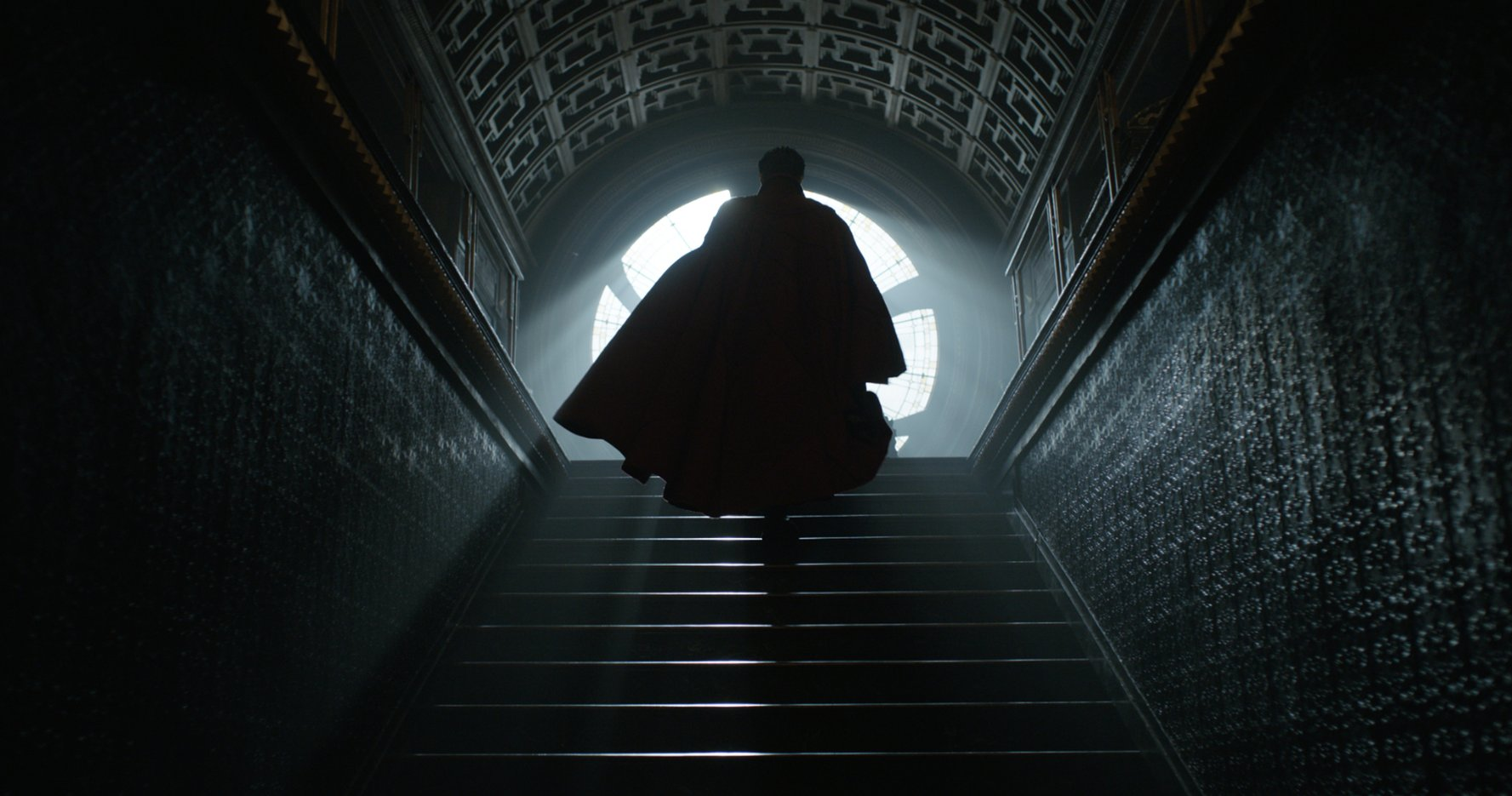
Plot Analysis
Doctor Strange is an odd movie in terms of the MCU; on one hand, it’s roughly the same superhero origin story we’ve seen several times over the past few decades. On the other hand, it’s quite a bit different from what we’ve seen from MCU movies so far. Dr. Steven Strange (Benedict Cumberbatch) is a New York City-based neurosurgeon, at the top of his field. A car accident leaves his hands with significant nerve damage, which causes constant trembling of his fingers, which means that he can no longer perform delicate surgery. Strange spends his considerable fortune on a series of treatments in pursuit of restoring his ability, becoming bitter over the situation and driving away love interest and fellow surgeon Christine Palmer (Rachel McAdams) in the process.
In a last, desperate attempt to cure himself, Strange tracks down Jonathan Pangborn (Benjamin Bratt), a metalworker who had overcome a severe spinal injury and resultant paraplegia to resume a normal life, in defiance of all medical reasoning. Pangborn sends Strange to Kamar-Taj, a mystic organization in Kathmandu, Nepal.
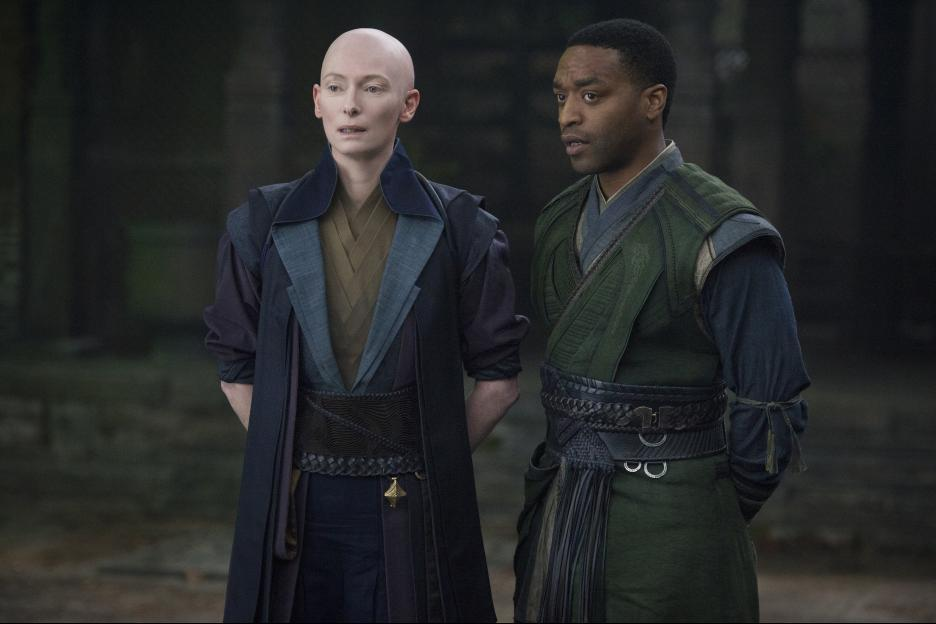
Strange is found wandering the streets in search of Kamar-Taj by Karl Mordo (Chiwetel Ejiofor), a member of the Kamar-Taj school. Mordo introduces Strange to the Ancient One (Tilda Swinton). The Ancient One tells Strange that he may cure himself using the knowledge of ancient mysticism. Strange dismisses this idea as trinket shop alt-medicine until the Ancient One forces his soul from his body and through a series of strange alternate dimensions.
Strange agrees to study the ways of Kamar-Taj, which essentially boil down to borrowing the natural laws of other dimensions to perform feats in earth’s dimension, or, more often, a mirror dimension where external effects on the real world are mitigated. Manipulation of this world’s natural laws, such as time, is forbidden. He quickly becomes a top student. This both pleases and frightens the Ancient One, whose last great pupil, Kaecilius (Mads Mikkelsen), has turned to drawing power from the Dark Dimension, which is also forbidden and very dangerous.
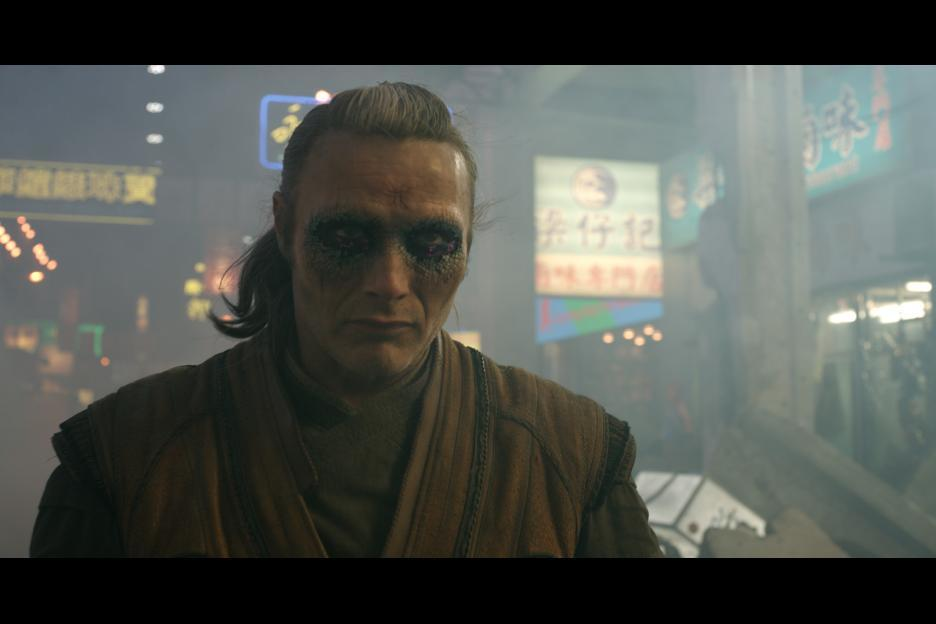
Kaecilius and his disciples eventually attack the Sanctums, safeguards against encroachment from other dimensions. Strange gets caught up in the fighting, barely holding off Kaecilius with the aid of a storehouse of mystical artifacts, including the Cloak of Levitation, a sentient, and very protective, flying cape. Here we find that Kaecilius dreams of bringing the earth into a state of total unity through consumption by Dormammu, a hunger entity residing in the Dark Dimension. One of Kaecilius’ disciples engages Strange in an extensive combat scene, allowing Kaecilius to escape. Strange, Mordo, and the Ancient One encounter him later, and Kaecilius mortally wounds the Ancient One after revealing that she herself had used the power of the Dark Dimension to prolong her life.
Kaecilius departs to the last standing Sanctum, in Hong Kong, as Strange takes the Ancient One to the hospital he once worked at. He guides Dr. Palmer and another surgeon through the operation, but it is unsuccessful, and the Ancient One dies. Mordo is disillusioned by the Ancient One’s deception but agrees to go with Strange to Hong Kong to oppose Kaecilius.
The two arrive to find the Hong Kong sanctum already defeated, and a portal to the Dark Dimension opens in the sky. Strange defies his teachings and reverses time. The portal remains open, though damage to Hong Kong reverses itself. In the midst of all this, Strange and his allies fight Kaecilius and his zealots.
Facing defeat, Strange flees the battle into the Dark Dimension to confront Dormammu directly. He proposes a bargain with Dormammu, whom he uses the power of time (a foreign law in the Dark Dimension) to trap in an infinite loop of Strange arriving to bargain and Dormammu killing him. Eventually, Dormammu comes to realize that an eternity of confronting Strange renders him unable to do anything else until Strange breaks the loop, making him Strange’s prisoner. He finally agrees to Strange’s bargain: Take Kaecilius and his zealots, leaving the rest of the earth alone, and Strange will break the loop.
Strange returns to earth, the day won. His hands still tremble, but he has found a new calling, taking the Ancient One’s place. In post-credit scenes, we see Strange meeting with Thor to discuss the goings-on in Asgard, and Mordo tracking down and re-crippling Pangborn, saying that he now sees that the problem with the world is that there are too many sorcerers.
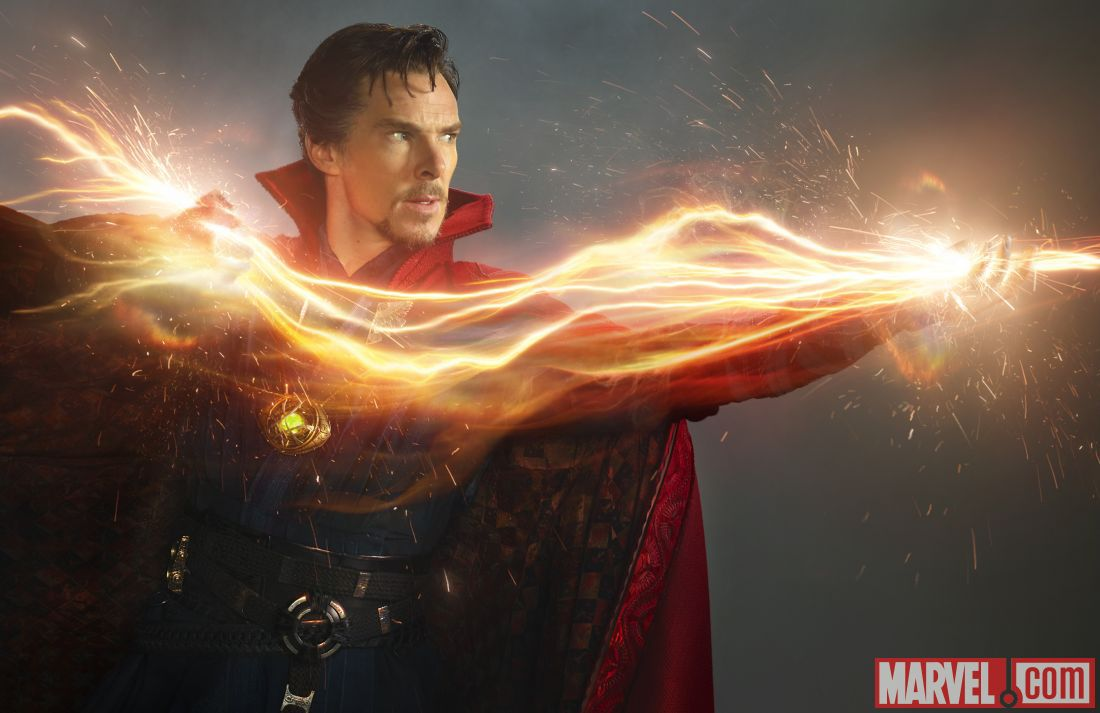
Analysis
Watching this in the theater, I was entertained. Thinking about it in the greater context of the MCU, though, I’m somewhat concerned.
I mentioned that Clarke’s Law explains the “magic” in this movie. And the whole borrowing from other dimensions in essentially unexplainable ways is the official explanation. (From the looks of the effects, Strange and his compatriots borrow liberally from the Dimension of Orange Sparks.) But the film doesn’t quite stick to this conceit: Strange is not an “interdimensional power user”, he is a sorcerer. The film is filled with powerful relics and old Latin and Sanskrit books. One relic, the Eye of Agamotto, is said to be an Infinity Stone, an ancient alien technology that has been a throughline for MCU films from Captain America: The First Avenger to Thor: The Dark World to Guardians of the Galaxy. But no attempt at explaining other relics beyond “they’re magic” is made.
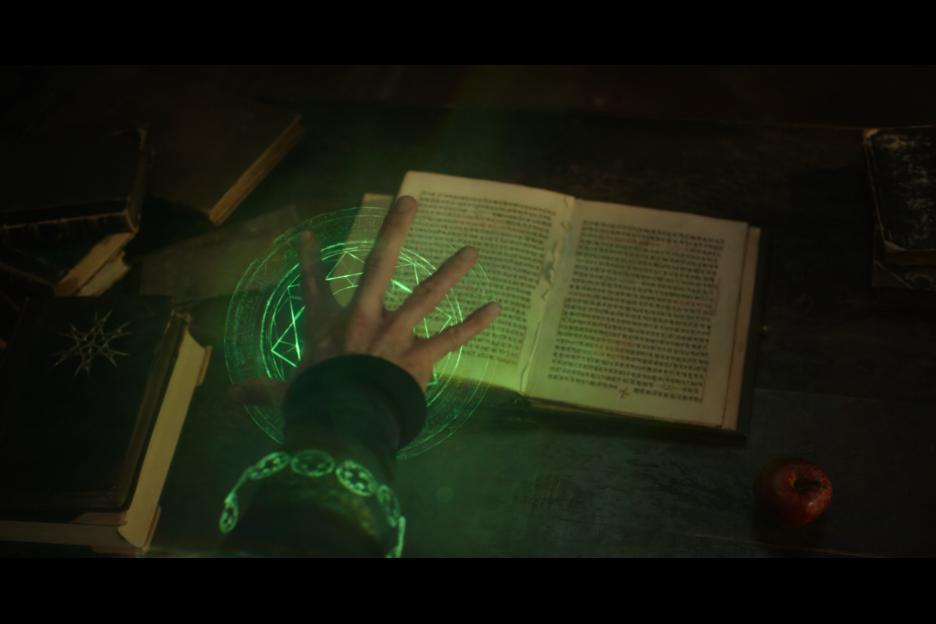
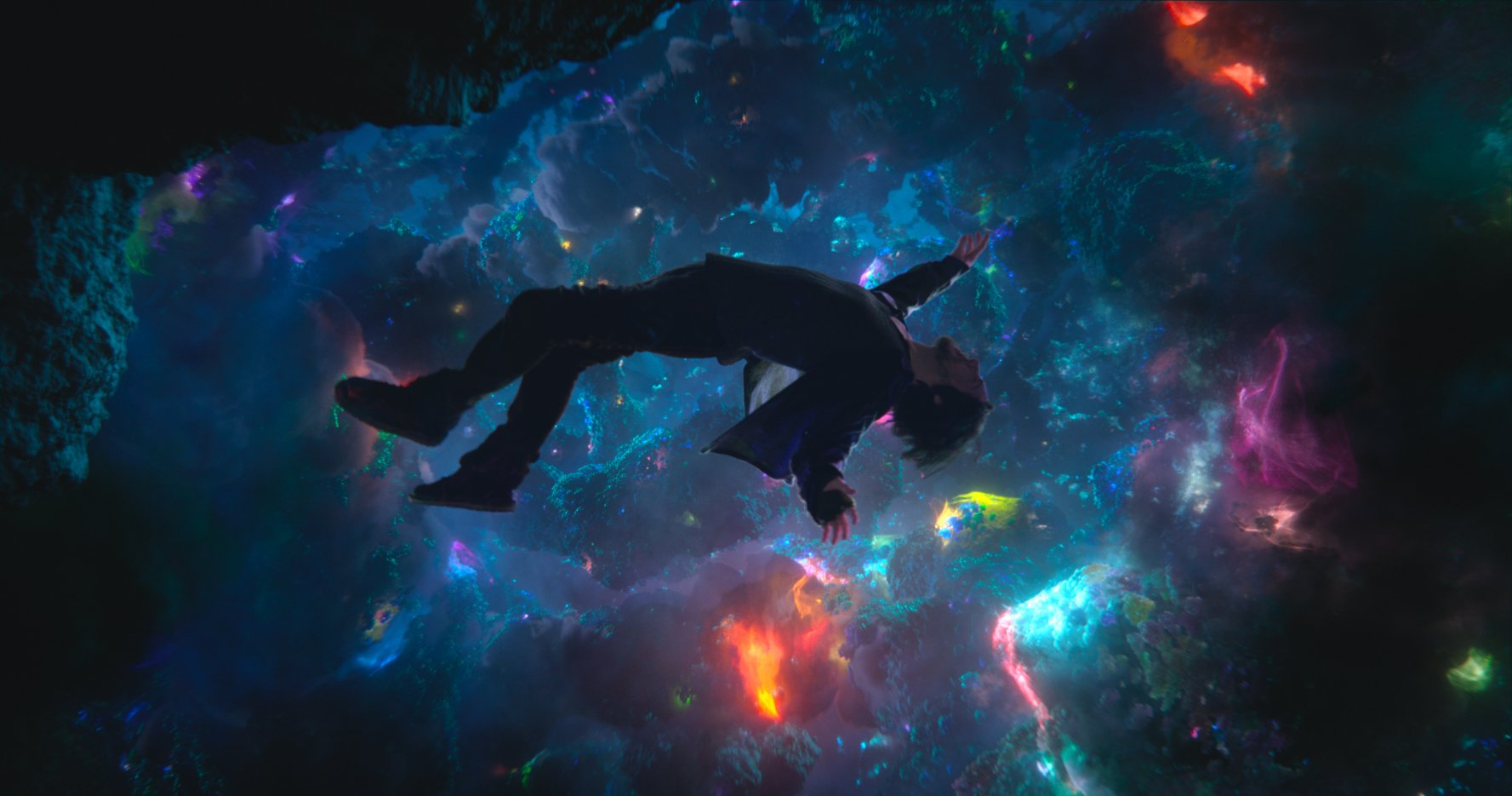
Ultimately, the inter-dimensional law trading is more an excuse than an explanation. I’d rather they had really stuck with the Clarkian premise rather than waving away my questions. A library full of old mystic tomes and a living cape really didn’t fit with most of the rest of this movie, and I disliked these elements.
Besides this, Doctor Strange was a fine movie. I found it very nice that Doctor Strange defeated his enemies by strategy rather than the more common finale of the genre in which the hero simply punches the villain hard enough. The visuals were utterly stunning, and the fight scenes were very well thought out. Much praise has been given to the duel scenes set in the Escher-esque Mirror Dimension, but I thought the most creativity was to be found in the pen-finale fight against Kaecilius wherein we see his earlier attack on the Hong Kong sanctum run backward around his dueling with Strange.
The acting was good. I’m one of Cumberbatch’s many fans, typecast as he is here (and everywhere). His American accent was, inauthentic, but not distractingly unnatural.
Tilda Swinton I knew from her role as Jadis in the now sadly mostly forgotten Narnia films of the ’00s. The Ancient One was a…I won’t say heroic, but I will say not plainly evil version of this character, which Swinton performs well. Ejiofor’s Mordo was an interesting character, and he promises to be an interesting antagonist in inevitable sequels.
Speaking of villains, Mikkelsen’s Kaecilius was…dead by the end, like far too many Marvel villains. I will credit the filmmakers for deviating from their mold of having an origin-story villain having a personal beef with the hero, but I really don’t rank Kaecilius terribly high on my list of great movie villains.
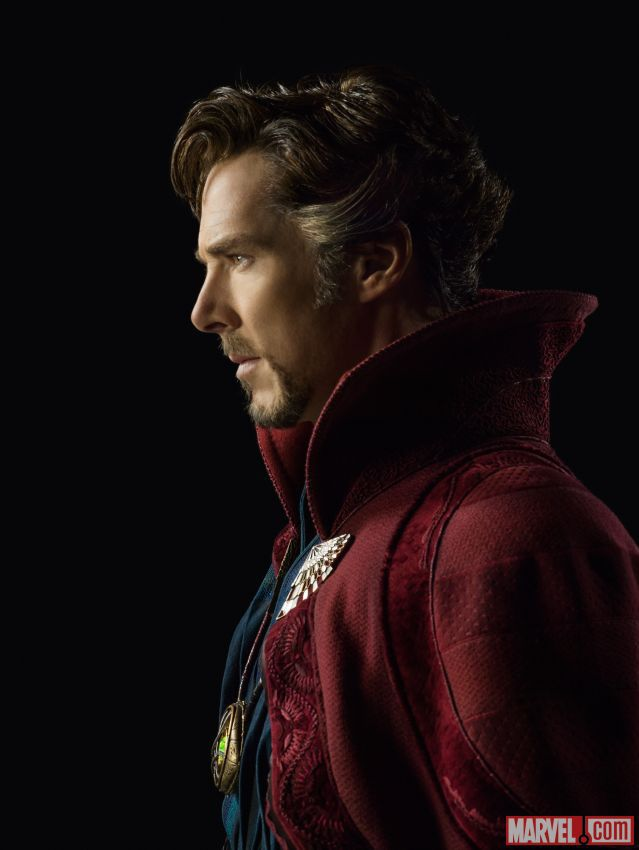
Rating
If you make a point of catching Marvel movies, and somehow missed this one in theaters (apologies for an excessively late review), go ahead and catch this via whatever home media means you prefer. If you like movies with creative visuals, you will love this. If you dislike fantasy elements in your superhero movies, then I’d probably skip this.
7/10




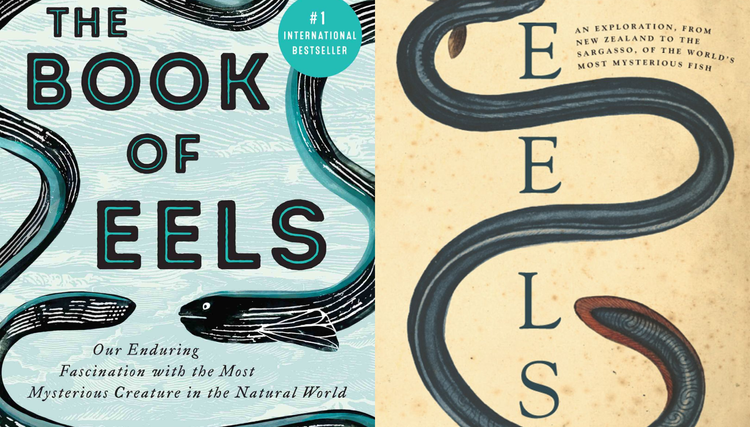

Member Commentary